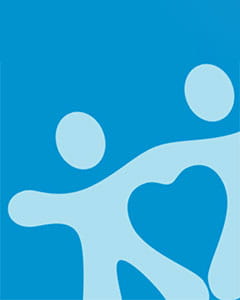How technology helped Katie overcome her fear of needles
Written by a Pediatric Nurse Practitioner at Arnold Palmer Hospital
Katie wants people to know that she’s still the same Katie she always was.
Her life was forever changed when a car accident nearly took her life in May of 2012. She endured a traumatic brain injury and was in a coma for six weeks. She has since required extensive hospitalizations and corrective surgeries for her cranial and facial fractures. She’s been through so much because of her accident - she required a tracheostomy to breathe and a G-tube to receive her nutrition, and she even had to have part of her skull removed to relieve the pressure on her brain. She was left with a disorder called panhypopituitarism, which means her body doesn't make enough of the normal hormones that regulate bodily functions. Despite all of these challenges and all of the changes that have occurred because of her medical needs, she says, “I’m still the same Katie in my heart.”
I met Katie when she came in with her father for an anesthesia consult prior to her last surgery. Dr. Ramon Ruiz was to perform a right frontal orbital reconstruction to repair her skull and eye socket, and because of her complex history the anesthesia team wanted to meet her ahead of time to discuss a plan for this surgery. Before she would be ready for surgery, we needed to take blood for her lab work.
During this visit, Katie was only anxious about one thing. The blood draw. And boy, was she anxious. We discovered that she had an intense fear of needles. Even before her accident, she had been terrified of them. She wouldn’t even get her ears pierced! After enduring months of hospital care after the accident, Katie’s fear had skyrocketed.
We tried several things to help her cope with the situation because, the truth was, we couldn't proceed with the surgery until her labs were obtained and reviewed. We tried talking through what needed to happen and explaining everything before we did it, but Katie just couldn't sit still and was starting to panic. We contacted a Child Life specialist in order to provide an iPad for Katie to watch as a distraction.
This is when Katie and her father revealed to us that she had been an incredible competitive dancer before her injury: ballet, tap, jazz, and point. Even when she was in the ICU after the accident, she unconsciously performed ballet moves and stretches. So we pulled up a video of her last competition when she did a lyrical ballet choreographed to the song "Try a little Tenderness." After seeing how beautifully she danced, I had goosebumps. It captivated us all, including Katie. We drew blood while she watched the video. Later, she told me that she hadn’t even realized that we performed the blood draw! She was so fascinated by sharing her dance with us that she allowed herself to be completely distracted, and her fear disappeared.
Although Katie isn’t able to dance anymore, the art form is still part of who she is. As she says, “I’m still the same Katie in my heart.” By sharing her dance with us, she was sharing her heart and soul. And in doing so, she was able to conquer her fears.
Several days later, we saw her again with her mother and father on the day of surgery. We had prepared her for the fact that she needed to have an IV (intravenous) line placed in pre-op before she could go back to surgery. By now, she was still a little nervous, but I could tell the anxiety level was nowhere near what it had been when I first met her. We had everything ready to distract her, and by now the nurses had gathered around to watch her beautiful dance. I started her IV line with no difficulty and she didn't even flinch! I was so proud of her.
The anesthesia team often uses iPads to provide distraction to our patients - not only for starting IVs, but also for distraction when younger children separate from their parents and go to the operating room with the anesthesia staff. As a result of Katie's experience and since technology has proven a useful distraction technique, our goal is to obtain iPads designated specifically for patients awaiting surgery.
When children are faced with surgeries and difficult medical situations, we do everything we can to make them as comfortable as possible. And when we’ve helped someone like Katie overcome her fears, we know we’ve done our job well.







